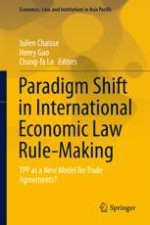2017 | OriginalPaper | Buchkapitel
19. The TPP and Government Procurement in Malaysia
verfasst von : Haniff Ahamat, Nasarudin Abdul Rahman
Erschienen in: Paradigm Shift in International Economic Law Rule-Making
Verlag: Springer Singapore
Aktivieren Sie unsere intelligente Suche, um passende Fachinhalte oder Patente zu finden.
Wählen Sie Textabschnitte aus um mit Künstlicher Intelligenz passenden Patente zu finden. powered by
Markieren Sie Textabschnitte, um KI-gestützt weitere passende Inhalte zu finden. powered by
